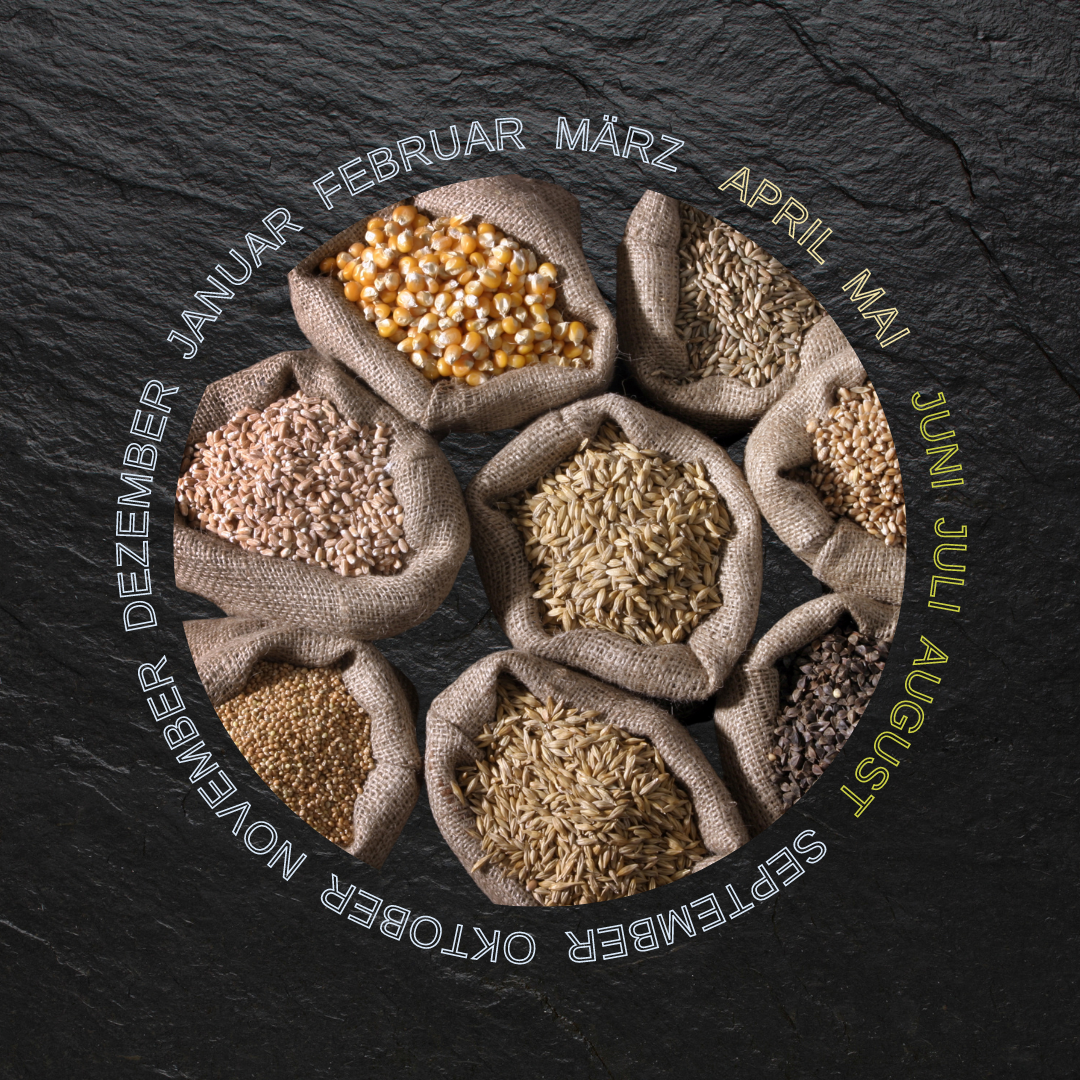
Grain knowledge: The right storage
Share
How do I store my grain properly and what is the shelf life?

As a general rule, grain is a natural product that should be stored in a cool, dry place and protected from light. Under optimal storage conditions, grain can normally be kept indefinitely. Nevertheless, there are a few "troublemakers" from which you should definitely protect your grain. How? Find out in this article!
First of all, after buying the grain, you should open the bag and check the quality. Also, it makes sense that you fill a smaller amount for your daily needs (stock for about 2-4 weeks) and store it in the kitchen. For example, screw-top jars, glass containers with a snap-on lid or containers with a wooden lid are suitable for this purpose.
The rest of the grain should be well sealed and stored in a bag. The cellar is suitable as a storage room, if it is not too damp. Otherwise, you can also store your grain in the pantry or in the lower kitchen cupboard. Make sure that the storage rooms are ventilated regularly and do not place the grain bag directly on the floor.

The harvest cycle
Not only with fruit and vegetables, but also with grain, it is advisable to take a look at the harvest cycle and buy according to it. This will allow you to optimize the storage of your grain.
April-May:
It's the beginning of spring and the temperatures are rising to 20 degrees. At this time of year you should use up your leftovers from the previous year.
June-August:
From mid-June to the end of August, winter and summer cereals in Germany are usually ready for harvest. The exact timing depends on the weather and the moisture content of the grains. In the summer months, when storage is critical, you should only buy as much grain as you need.
September-March:
From autumn you can fill up your storage stock for the winter. For storage, follow our tips.
I have an animal infestation - What now?
If you have discovered unwelcome friends such as grain weevils or food moths in your grain, this means that the grains have been eaten or contain larvae. Basically, these can be metabolized, as they consist mainly of protein. So you can still process the infested grain. If you do not want to do this, you can of course dispose of it. Afterwards, you should clean the storage room thoroughly and, of course, check all other foodstuffs for infestation.
